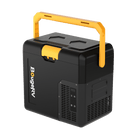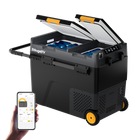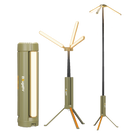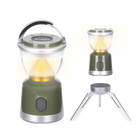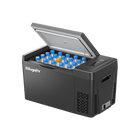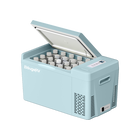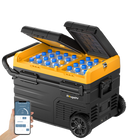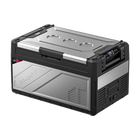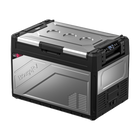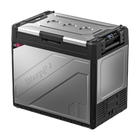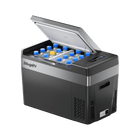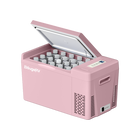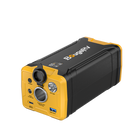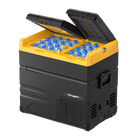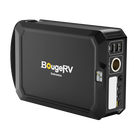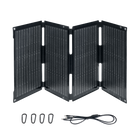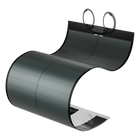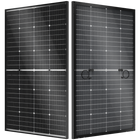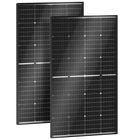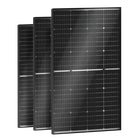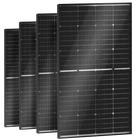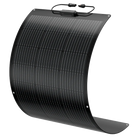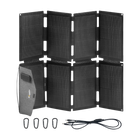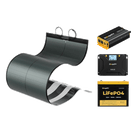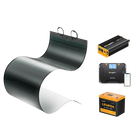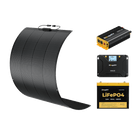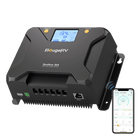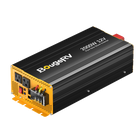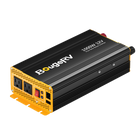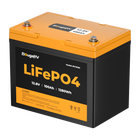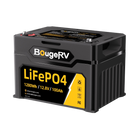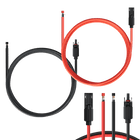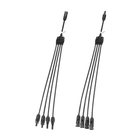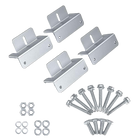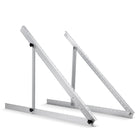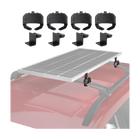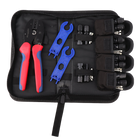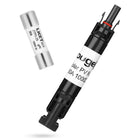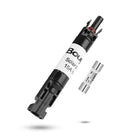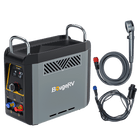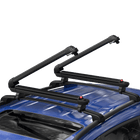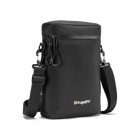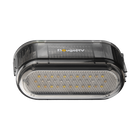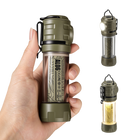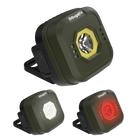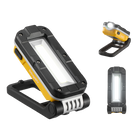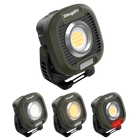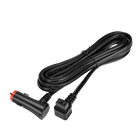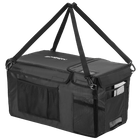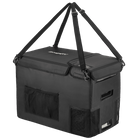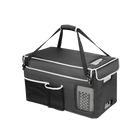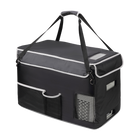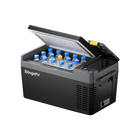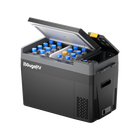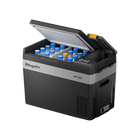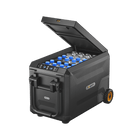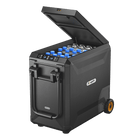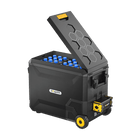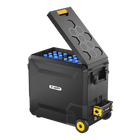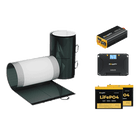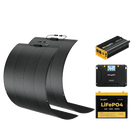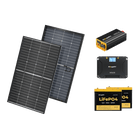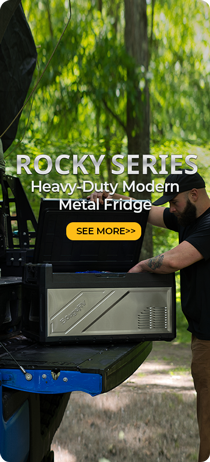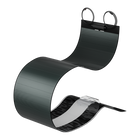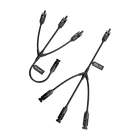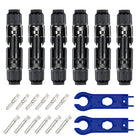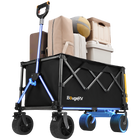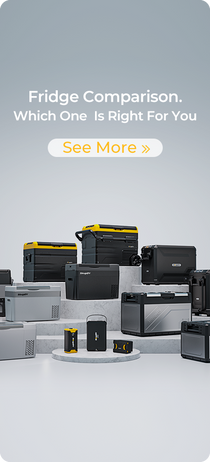Solar Panels for Tiny Houses: All You Need to Know!

When you’ve stumbled upon this blog, chances are you’re either dreaming about living off the grid or already nestled in your cozy little abode. Either way, let’s chat about one of the hottest topics in the tiny house community: solar panels for tiny houses.
Living sustainably isn't just a passing fad; it's a way of life that helps us live in harmony with nature and shrink our carbon footprint. Whether you’re looking to cut down on utility bills or seeking complete energy independence, solar panels can truly make a difference. So, pour yourself a cup of coffee (or tea, we're not picky), and let's explore all you need to know about going solar in your tiny home.
Why Go Solar?
First off, why should you even consider solar panels for your tiny house? Here are a few compelling reasons:
-
Energy Independence: Imagine never having to stress about electricity bills again. Solar panels can turn that dream into a reality by giving you a renewable energy source right at home.
-
Cost-Effective: While the initial investment might seem steep, solar panels pay for themselves over time. Plus, there are often tax incentives and rebates available that can offset the cost.
-
Off-Grid Living: If you crave total independence, solar panels are a must-have. They enable you to live comfortably without relying on external power sources.
-
Increased Property Value: Solar panels can add value to your tiny home. Potential buyers view them as a savvy, eco-friendly feature.
-
Eco-Friendly: Solar power is clean and green. By harnessing the sun's energy, you're significantly reducing your carbon footprint and helping combat climate change.
How Do Solar Panels Work?

Now, let’s break down how these shiny solar panels convert sunlight into usable electricity:
1. Photovoltaic (PV) Cells: These are the heart of solar panels. When sunlight hits the PV cells, they generate direct current (DC) electricity.
2. Inverter: The DC electricity produced by the solar panels isn't compatible with most household appliances. That’s where an inverter comes in; it converts DC into alternating current (AC), which is what your tiny house runs on.
3. Battery Storage: To ensure you have power even when the sun isn’t shining, you’ll need a battery storage system. This stores excess energy for later use.
4. Charge Controller: This device ensures that the batteries don’t overcharge or discharge too much, extending their lifespan.
Types of Solar Panels
When it comes to choosing solar panels for your tiny house, you'll typically encounter three main types:
- Monocrystalline Solar Panels: These are the most efficient options. They have a sleek appearance and require less space, making them ideal for tiny houses.
- Polycrystalline Solar Panels: Slightly less efficient and cheaper than Monocrystalline solar panels. They take up more space, so keep that in mind if roof space is limited.
- Thin-Film Solar Panels: These are the least efficient but the most flexible. They can be integrated into different surfaces, like windows or walls.
Calculating Your Energy Needs For Tiny House

Before you rush out to buy solar panels, it's crucial to calculate your energy needs. Let’s take a look at the step-by-step guide:
1. List Your Appliances: Make a list of all the electrical gadgets and appliances you plan to use. Include everything from lights to refrigerators.
2. Check Wattage: Find out the wattage for each item. This information is usually available on the appliance itself or in its manual.
3. Calculate Daily Usage: Multiply the wattage by the number of hours you plan to use each appliance daily. This will give you the daily watt-hour (Wh) requirement.
4. Add It All Up: Sum up the daily watt-hour requirements for all your appliances to get your total daily energy consumption.
5. Factor in Efficiency Losses: Solar panel systems aren’t 100% efficient due to various losses. It's wise to add a buffer of around 25%.
Example:
Let's walk through a simple example to illustrate the process.
Suppose you have the following appliances in your tiny house:
|
Devices for Tiny House |
Wattage Consumption |
Usage Per Day |
|
LED Light Bulb |
10 watts |
5 hours |
|
Laptop |
50 watts |
4 hours |
|
Refrigerator |
100 watts |
24 hours (refrigerators run continuously. So let's assume the refrigerator only uses its full wattage for 8 hours a day due to its cycling on and off) |
Here's how you calculate your total daily energy needs:
- LED Light Bulb: 10 watts × 5 hours = 50 Wh
- Laptop: 50 watts × 4 hours = 200 Wh
- Refrigerator: 100 watts × 8 hours = 800 Wh
Total Daily Energy Consumption = 50 Wh + 200 Wh + 800 Wh = 1050 Wh (or 1.05 kWh)
Add a 25% buffer for efficiency losses: 1.05 kWh × 1.25 = 1.3125 kWh
So, you would need approximately 1.3125 kWh of energy from your solar panel system every day to power these appliances efficiently, taking into account potential losses.
How Many Solar Panels Do You Need?
Now that you know your energy needs, you can figure out how many solar panels you need. Here’s a simple formula:
Number of Solar Panels = Total Daily Energy Consumption ÷ (Solar Panel Wattage × Average Sunlight Hours Per Day)
For example, if your tiny house consumes 1312.5 Wh per day, and you have solar panels that produce 300W each, with an average of 5 sunlight hours per day:
Number of Solar Panels = 1312.5Wh ÷ (300W × 5h) = 0.875 (approximately 1 solar panel).
So, in this scenario, one 300W solar panel should be enough to power your tiny house!
5 Pro Tips for Installing Solar Panels on Your Tiny House
Now, you’r ready to go solar? Here are five tips to ensure a smooth installation process:
- Roof Condition: Ensure your roof is in good condition and can support the weight of the solar panels.
- Optimal Angle: Solar panels should ideally be tilted at an angle equal to your latitude for maximum efficiency. Adjustable mounts can help achieve this.
- Wiring: Proper wiring is critical. If you’re not comfortable doing it yourself, hire a professional electrician.
- Permits and Regulations: Check local building codes and regulations. Some areas require permits for solar installations.
- Maintenance: Solar panels are generally low maintenance, but it’s still essential to keep them clean and check for any issues regularly.
Cost Breakdown
The cost of installing solar panels can vary widely based on several factors:
1. Solar Panel Type: Monocrystalline solar panels are more expensive than Polycrystalline ones. At BougeRV, our flexible solar panels are a bit pricier than our Monocrystalline solar panels because they utilize advanced CIGS solar cells, which can bend 360° to fit any surface on your tiny house. Our customers typically buy these flexible solar panels for boat events! Discover more about BougeRV solar panels.
2. System Size: Larger systems will cost more upfront but may offer better long-term savings.
3. Installation Fees: Professional installation can add to the cost, but it ensures the job is done correctly, saving you time and effort.
4. Additional Components: Don’t forget about inverters, batteries, wires, and charge controllers. These solar system components can add to the overall expense.
On average, you might spend anywhere from $5,000 to $15,000 for a complete solar setup for a tiny house. Remember to look into federal and state incentives, which can significantly reduce the initial cost.
Success Stories From BougeRV Customers

Still on the fence? Hear from our happy customers who have successfully gone solar:
Sarah and Mike: This adventurous couple lives in a 200 sq ft tiny house in Colorado. By installing a 3kW solar system, they've managed to go completely off-grid. Their monthly utility savings allow them to put more money towards travel and experiences.
Jenifer: A solo traveler with a passion for sustainability, Jenifer installed a small 1.5kW solar system on her tiny house on wheels. She loves the freedom it gives her to park in remote locations without sacrificing modern conveniences.
The Green Family: Living in a larger tiny house of about 300 sq ft, this family of four installed a 5kW system. They’ve seen their energy costs drop to nearly zero and enjoy teaching their kids about renewable energy.
Final Thoughts
Solar panels are a fantastic addition to any tiny house. They offer a sustainable, cost-effective solution to meet your energy needs while promoting a greener planet. By investing in a solar system, you’re not just enhancing your own lifestyle but also contributing to a global movement towards renewable energy.
If you’re ready to take the plunge, start by calculating your energy needs and researching the best solar panels for tiny houses. And remember, every step towards sustainability is a win for both you and our beautiful planet!







